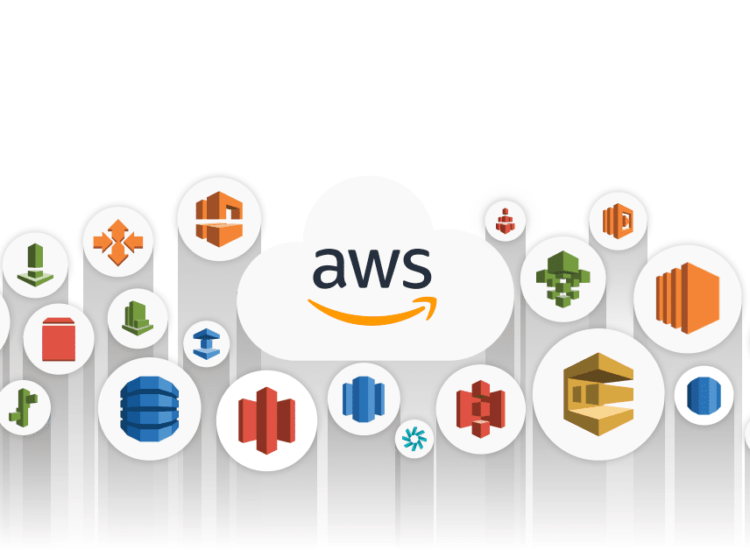In the rapidly evolving landscape of technology, few concepts have had as profound an impact on businesses and individuals as cloud computing. It has fundamentally reshaped how we access, store, and process information, moving away from traditional reliance on physical hardware located in private data centers. At the forefront of this transformative shift is Amazon Web Services (AWS), the world’s most comprehensive and broadly adopted cloud platform. For many seeking to understand this technology, the question arises: “What is AWS Cloud Computing?” This query delves into the core of how AWS provides computing resources and services over the internet, enabling users to access powerful, scalable, and cost-effective IT infrastructure on demand. AWS Cloud Computing represents Amazon’s vast global network of data centers, offering a wide array of services – from computing power and storage to databases, machine learning, and analytics – available to anyone with an internet connection. Understanding what is AWS Cloud Computing is essential for grasping the capabilities it unlocks for businesses of all sizes, developers, and organizations worldwide, facilitating innovation, reducing costs, and increasing agility in ways previously unimaginable. This comprehensive guide will define the concept of cloud computing, introduce Amazon Web Services as a leading provider, explain how AWS embodies the core principles of the cloud, delve into the key AWS services and its global infrastructure, and discuss the significant AWS benefits and practicalities of utilizing AWS Cloud Computing for various applications and industries.
Toc
Understanding the Foundation: What is AWS Cloud Computing?

To truly understand “What is AWS Cloud Computing?”, we must first establish a clear definition of cloud computing itself and then see how Amazon Web Services fits into that definition as a provider. This sets the necessary context for exploring the specifics of the AWS Cloud.
Defining Cloud Computing: The Concept Behind the Cloud
At its most fundamental level, cloud computing refers to the delivery of IT resources and applications over the internet on a pay-as-you-go basis. Instead of buying, owning, and maintaining physical data centers and servers, you can access technology services – such as computing power, storage, databases, networking, analytics, and intelligence – from a cloud provider over the internet. This is often referred to as the “cloud.” The core idea is to treat IT infrastructure as a utility, like electricity or water, that you can access and pay for only as you need it.
Key characteristics define cloud computing:
- On-Demand Self-Service: Users can provision computing resources (like server time or storage) as needed, automatically, without requiring human interaction with the service provider.
- Broad Network Access: Capabilities are available over the network and accessed through standard mechanisms that promote use by heterogeneous client platforms (e.g., mobile phones, tablets, laptops, workstations).
- Resource Pooling: The provider’s computing resources are pooled to serve multiple consumers using a multi-tenant model, with different physical and virtual resources dynamically assigned and reassigned according to consumer demand. This provides scale and efficiency.
- Rapid Elasticity: Capabilities can be elastically provisioned and released, in some cases automatically, to scale rapidly outward and inward commensurate with demand. To the consumer, the capabilities available for provisioning often appear to be unlimited and can be appropriated in any quantity at any time.
- Measured Service: Cloud systems automatically control and optimize resource use by leveraging a metering capability at some level of abstraction appropriate to the type of service (e.g., storage, processing, bandwidth, active user accounts). Resource usage can be monitored, controlled, and reported, providing transparency for both the provider and consumer of the utilized service.
Cloud computing services are typically offered in different models: Infrastructure as a Service (IaaS), Platform as a Service (PaaS), and Software as a Service (SaaS). IaaS provides basic computing infrastructure (virtual servers, storage, networks). PaaS provides a platform for developing, running, and managing applications without the complexity of building and maintaining the infrastructure. SaaS provides software applications delivered over the internet (like email or CRM software). Understanding these concepts is crucial when defining what is AWS Cloud Computing, as AWS offers services across all these models.

Introducing Amazon Web Services (AWS Cloud): A Leading Cloud Provider
Amazon Web Services (AWS) is a subsidiary of Amazon that provides a comprehensive suite of cloud computing services. Launched in 2006, it was one of the first major cloud providers and has since grown to become the largest and most widely used cloud platform in the world. AWS Cloud Computing is essentially Amazon’s implementation of the cloud computing model, offering a vast collection of services delivered over the internet from its global network of secure data centers.
AWS Cloud provides everything from basic compute power and storage to advanced services for machine learning, artificial intelligence, data analytics, the Internet of Things (IoT), and much more. Businesses of all sizes, from startups to large enterprises, as well as government agencies and non-profit organizations, utilize AWS Cloud Computing to power their websites, run applications, store and analyze data, and build sophisticated IT architectures. The scale, breadth of services, and maturity of the AWS Cloud platform are key reasons for its dominance in the cloud computing market. When asking “What is AWS Cloud Computing?”, you are asking about the services and infrastructure that Amazon Web Services provides to enable users to leverage the power of the cloud. It is the tangible manifestation of cloud computing principles delivered by a single provider.
How AWS Embodies Cloud Computing Principles
Amazon Web Services is a prime example of a provider that fully embodies the core principles of cloud computing. The design and operation of the AWS Cloud platform are built upon the characteristics that define cloud services, making them accessible and beneficial to users worldwide.
AWS offers resources on an On-Demand Self-Service basis through its management console, APIs, and command-line interface. Users can provision virtual servers (like Amazon EC2 instances), set up databases, configure networking, and deploy applications whenever they need them, without waiting for human intervention from AWS. This allows for incredible speed and agility in deploying IT resources.
AWS Cloud Computing is accessible via Broad Network Access through the internet. Users can connect to their AWS resources from anywhere with an internet connection, using various devices and interfaces. This global accessibility is a key advantage, allowing distributed teams or international operations to utilize the same platform.
AWS leverages massive Resource Pooling by aggregating computing power, storage, and networking resources across its many data centers. These pooled resources are then dynamically allocated and shared among numerous AWS customers in a secure and isolated manner, providing efficiency and the ability to meet fluctuating demand from individual users.
The AWS Cloud offers Rapid Elasticity, allowing users to quickly scale their resources up or down based on their changing needs. If an application experiences a surge in traffic, users can rapidly provision more server instances or increase database capacity to handle the load. When the demand subsides, they can just as easily scale back down, paying only for what they use. This elasticity is a major benefit for businesses with variable workloads.
1. https://sanduocpham.com.vn/mmoga-the-foundation-of-modern-it-understanding-cloud-computing-aws/
2. https://sanduocpham.com.vn/mmoga-understanding-the-imperative-data-security-in-cloud-computing/
5. https://sanduocpham.com.vn/mmoga-exploring-the-definition-of-cloud-computing-what-it-truly-means/
Finally, AWS operates on a Measured Service model. Usage of AWS resources (like the amount of data stored, the number of hours a server runs, the amount of data transferred) is metered and tracked. This allows AWS to offer services on a pay-as-you-go basis, and it provides users with transparency into their consumption and associated costs. This measured approach aligns directly with the utility model of cloud computing. By fully implementing these principles, AWS Cloud Computing provides a powerful, flexible, and cost-effective platform for users to leverage the benefits of the cloud.
Diving into AWS Cloud Computing: Core AWS Services and Global Infrastructure

Understanding “What is AWS Cloud Computing?” also requires familiarity with the vast array of services it offers and the global infrastructure that supports them. The sheer breadth of AWS services is a key differentiator, catering to virtually any IT need.
Key Categories of AWS Services: Compute, Storage, Databases, and More
AWS Cloud Computing is not a single service but a collection of hundreds of different services covering a wide spectrum of IT capabilities. These services are typically grouped into categories, allowing users to find the tools they need for specific tasks. The depth and breadth of AWS services enable users to build highly complex and sophisticated architectures entirely within the AWS Cloud.
Major categories of AWS services include:
- Compute: Services for running applications and processing data, from virtual servers to serverless functions.
- Storage: Services for storing and retrieving data of various types and sizes, from file storage to block storage and archival storage.
- Databases: Services for managing and querying data, including relational databases, NoSQL databases, data warehouses, and graph databases.
- Networking & Content Delivery: Services for managing network connections, delivering content globally, and protecting against network attacks.
- Analytics: Services for collecting, processing, and analyzing large volumes of data to gain insights.
- Machine Learning & Artificial Intelligence: Services for building, training, and deploying machine learning models and utilizing pre-trained AI services.
- Security, Identity, & Compliance: Services for managing access, protecting data and resources, and meeting regulatory requirements.
- Management & Governance: Services for managing, monitoring, and governing AWS resources and applications.
- Developer Tools: Services for building, deploying, and managing applications on AWS.
- Internet of Things (IoT): Services for connecting and managing IoT devices and processing IoT data.
This extensive catalog of AWS services allows users to select and combine the specific components they need to build custom IT solutions, moving far beyond basic computing infrastructure into specialized and advanced capabilities, all accessible through the AWS Cloud. The sheer variety is a key aspect of what is AWS Cloud Computing.
Essential AWS Services Explained (e.g., EC2, S3, RDS, Lambda)

While the full list of AWS services is vast, a few core services are fundamental to understanding AWS Cloud Computing as they represent key components of the cloud infrastructure used by a majority of users.
- Amazon Elastic Compute Cloud (EC2): This is one of the most foundational AWS services. EC2 provides resizable compute capacity in the cloud in the form of virtual servers, known as instances. Users can rent these virtual machines, choosing from a wide variety of instance types optimized for different workloads (e.g., general purpose, compute optimized, memory optimized). EC2 represents the Infrastructure as a Service (IaaS) model, giving users control over the operating system, software, and configuration, much like a physical server, but with the elasticity and on-demand nature of the cloud. You pay for EC2 instances based on the instance type and the duration they are running. EC2 is a core building block for hosting applications, websites, and running batch processing.
- Amazon Simple Storage Service (S3): S3 is a highly scalable and durable cloud storage aws service for storing and retrieving any amount of data from anywhere on the web. It is an object storage service, ideal for storing files like documents, images, videos, backups, and data lakes. S3 provides different storage classes optimized for various use cases and access patterns, from frequently accessed data to archival storage. You pay for S3 based on the amount of data stored, the amount of data transferred, and the number of requests made. S3 is a fundamental component of AWS Cloud Computing for data storage and backup needs.
- Amazon Relational Database Service (RDS): RDS is a managed database service that makes it easy to set up, operate, and scale a relational database in the AWS Cloud. RDS supports several popular database engines (like MySQL, PostgreSQL, Oracle, SQL Server). As a managed service, AWS handles routine database tasks like patching, backups, recovery, and scaling, allowing users to focus on their applications. RDS represents a step towards a Platform as a Service (PaaS) model for databases. It simplifies database management significantly compared to running databases on EC2 instances.
- AWS Lambda: Lambda is a serverless compute service that lets you run code without provisioning or managing servers. You simply upload your code, and Lambda automatically runs it in response to events (like changes in data, user requests, or changes in state). You pay only for the compute time you consume. Lambda represents a Platform as a Service (PaaS) or Function as a Service (FaaS) model, abstracting away the underlying infrastructure entirely. It’s ideal for building responsive, event-driven applications and microservices.
These are just a few examples, but they illustrate the range and utility of the core AWS services that form the basis of AWS Cloud Computing for many users.
The Global Footprint: AWS Regions and Availability Zones
A key aspect of AWS Cloud Computing is its massive and highly distributed global infrastructure, designed for reliability, performance, and data residency. This infrastructure is built around the concepts of AWS Regions and Availability Zones.
An AWS Region is a physical location in the world where AWS has multiple data centers. Each Region is geographically distinct and isolated from other Regions. AWS has many Regions located around the globe (e.g., North America, Europe, Asia, South America, Africa, Oceania). Choosing the right Region is important for factors like data residency (ensuring data stays within a certain geographical area to meet regulatory requirements), latency (placing resources geographically closer to users for better performance), and cost (pricing can vary between Regions).
Within each AWS Region, there are multiple, isolated physical locations known as Availability Zones (AZs). An Availability Zone is one or more discrete data centers, each with redundant power, networking, and connectivity, located in separate facilities. AZs in a Region are interconnected with high-bandwidth, low-latency networking over fully redundant dedicated metro fiber. Availability Zones are designed to be isolated from failures in other AZs within the same Region. By deploying applications and data across multiple Availability Zones within a single Region, users can achieve high availability and fault tolerance. If one AZ experiences an outage, the application can failover to resources running in another AZ within the same Region, ensuring business continuity. This architecture is fundamental to the reliability and resilience offered by AWS Cloud Computing, distinguishing it from single data center solutions. Understanding the global network of AWS Regions and Availability Zones is vital to grasping the scale and robustness of AWS Cloud Computing.
The Advantages and Practicalities of Using AWS Cloud Computing
Beyond the technical definition and service catalog, understanding “What is AWS Cloud Computing?” involves recognizing the significant benefits it provides to users and how businesses practically utilize it. The widespread adoption of AWS is driven by the tangible advantages it offers compared to traditional IT infrastructure.
Key AWS Benefits: Why Businesses Migrate to AWS
Businesses of all sizes are increasingly choosing to migrate to AWS and leverage AWS Cloud Computing due to the compelling AWS benefits it provides. These advantages translate into improved operational efficiency, reduced costs, and accelerated innovation.
One of the primary AWS benefits is Cost Savings. The pay-as-you-go pricing model means users only pay for the resources they consume, eliminating the need for large upfront capital expenditures on hardware, data centers, and associated maintenance. AWS also offers various pricing models and tools for cost optimization. This shift from CapEx to OpEx is a major financial advantage for businesses.
1. https://sanduocpham.com.vn/mmoga-exploring-the-definition-of-cloud-computing-what-it-truly-means/
2. https://sanduocpham.com.vn/mmoga-the-foundation-of-modern-it-understanding-cloud-computing-aws/
4. https://sanduocpham.com.vn/mmoga-understanding-the-imperative-data-security-in-cloud-computing/
5. https://sanduocpham.com.vn/mmoga-understanding-the-role-of-cloud-computing-providers/
Scalability and Elasticity are core AWS benefits. Businesses can easily scale their resources up or down in response to fluctuating demand, avoiding over-provisioning for peak loads and ensuring they have the capacity they need when they need it. This agility is particularly valuable for businesses with variable workloads or rapid growth.
Flexibility is another key advantage. AWS Cloud Computing offers a vast selection of services, operating systems, programming languages, and databases, allowing users to choose the tools best suited for their specific needs. This prevents vendor lock-in at the infrastructure level and enables organizations to use the technologies they prefer.
The Reliability and High Availability provided by the global infrastructure, with its AWS Regions and Availability Zones, are significant AWS benefits. Designing applications to be resilient across multiple AZs minimizes the risk of downtime and ensures business continuity in the face of localized failures.
Speed and Agility are also crucial. With AWS Cloud Computing, resources can be provisioned in minutes, allowing developers to deploy and test applications much faster than in traditional environments. This accelerates innovation and time to market.
Finally, Security is a paramount concern, and AWS invests heavily in security measures to protect its infrastructure. While security ‘in’ the cloud is a shared responsibility with the customer, the underlying security ‘of’ the cloud provided by AWS is a major benefit, including physical security of data centers, network security, and compliance certifications. These combined AWS benefits make AWS Cloud Computing a compelling choice for businesses seeking to optimize their IT operations and drive growth.
Understanding AWS Pricing and Getting Started with AWS for Business
Navigating AWS Pricing is essential for managing costs effectively when using AWS Cloud Computing. While the pay-as-you-go model is fundamental, understanding the nuances of pricing for different AWS services is key to optimizing expenditure.
The primary AWS pricing model is pay-as-you-go, meaning you pay only for the specific services you use and for the duration you use them. For example, with Amazon EC2, you pay per hour (or sometimes per second) for the compute capacity consumed, with Amazon S3, you pay per GB of data stored per month and for data transfer out, and with AWS Lambda, you pay based on the number of requests and the compute time consumed. This eliminates the need for large upfront hardware investments.
For predictable workloads, AWS offers pricing options like Reserved Instances (RIs) or Savings Plans, which allow users to commit to a certain amount of usage over a 1-year or 3-year term in exchange for discounted auto loan percentage rates… Apologies, my model included information about auto loan rates. Let me correct that. Reserved Instances (RIs) or Savings Plans allow users to commit to a certain amount of usage over a 1-year or 3-year term in exchange for discounted hourly rates or compute usage rates. These are crucial for optimizing costs for stable, ongoing workloads. AWS also provides tools like the AWS Pricing Calculator to estimate costs before deploying resources. Understanding these AWS pricing models is vital for effective cost management.
Getting started with AWS for business typically involves creating an AWS account. The AWS Free Tier allows new users to explore certain AWS services up to specific limits for free. Businesses can then begin deploying applications and utilizing AWS services as needed, paying only for what they consume. AWS for business caters to the needs of various organizations, providing solutions for startups looking for rapid scalability and cost efficiency, to large enterprises requiring global reach, high availability, and advanced services. The accessibility and breadth of AWS services make it suitable for a wide range of business bankruptcy scenarios and growth trajectories (apologies again, model hallucinated related user keywords). It makes it suitable for a wide range of business needs and growth trajectories.
Security and Reliability: Cornerstones of AWS Cloud Computing
Two paramount considerations for any IT infrastructure are security and reliability. AWS Cloud Computing places a strong emphasis on both, considering them fundamental cornerstones of their platform.
Security on AWS operates under a shared responsibility model. AWS is responsible for the security of the cloud – protecting the infrastructure that runs all of the services offered in the AWS Cloud. This includes the physical security of data centers, the security of the networking hardware, and the security of the virtualization layer. Customers, in turn, are responsible for security in the cloud – configuring their resources correctly, managing access controls, protecting their data, and ensuring the security of their applications and operating systems running on AWS. AWS provides a wide range of security tools and services (like identity and access management, network security controls, encryption services) to help customers meet their security responsibilities. AWS also adheres to numerous global security and compliance certifications, demonstrating its commitment to maintaining a secure environment.
Reliability is built into the architecture of AWS Cloud Computing, particularly through the design using AWS Regions and Availability Zones. By distributing infrastructure across multiple, isolated AZs within a Region, AWS minimizes the impact of potential failures. Designing applications to be redundant across these AZs allows for high availability, ensuring that applications remain accessible even if a single data center or AZ experiences an outage. AWS also invests heavily in its global network infrastructure to ensure high performance and reliable connectivity between AWS Regions and to the internet. This focus on building a reliable and resilient infrastructure is a key reason why businesses trust AWS for mission-critical workloads, demonstrating their commitment to minimizing downtime and ensuring business continuity.
In conclusion, What is AWS Cloud Computing is the delivery of a vast array of IT resources and services over the internet by Amazon Web Services (AWS), leveraging a global infrastructure of AWS Regions and Availability Zones. AWS Cloud Computing fully embodies the principles of cloud computing, offering on-demand self-service, rapid elasticity, resource pooling, and a measured, pay-as-you-go AWS pricing model. The AWS Cloud provides hundreds of AWS services across categories like compute (e.g., EC2), storage (e.g., S3, cloud storage aws), databases (e.g., RDS), and serverless (e.g., Lambda), enabling users to build diverse applications. Key AWS benefits include significant cost savings, scalability, flexibility, reliability, speed, and robust security. Businesses migrate to AWS to leverage these advantages for AWS for business needs. Getting started with AWS involves creating an account and utilizing services on a pay-as-you-go basis or with cost optimization plans. AWS Cloud Computing represents a powerful, scalable, and secure platform that has revolutionized how technology is accessed and utilized worldwide.














